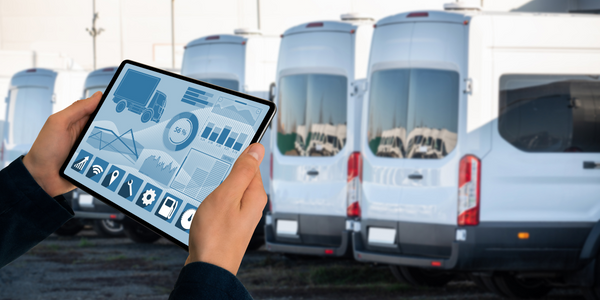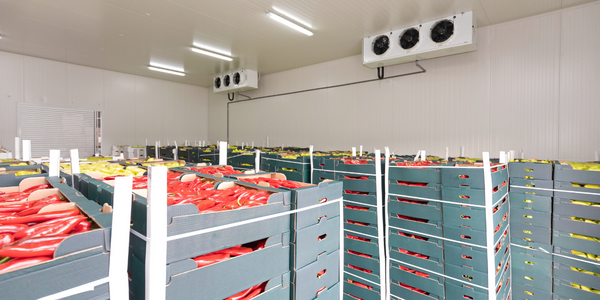Customer Company Size
Large Corporate
Region
- Europe
Country
- Italy
Product
- ICONICS GENESIS32
- DataWorX32
- AlarmWorX32
- ScriptWorX32
Tech Stack
- OPC server link by Applicom Cards
- Siemens S7-300 PLCs
- Oracle DB8 database
- Windows 2000 Server and Professional operating systems
Implementation Scale
- Enterprise-wide Deployment
Impact Metrics
- Productivity Improvements
- Customer Satisfaction
Technology Category
- Automation & Control - Automation & Process Control Systems
Applicable Industries
- Transportation
Applicable Functions
- Logistics & Transportation
Use Cases
- Process Control & Optimization
- Remote Asset Management
Services
- System Integration
About The Customer
Elsag S.p.A., a division of FINMECCANICA, provides IT solutions focused on postal, automation, security, industrial and defense systems. It works in tandem with SEA, the company that manages both the Malpensa and Linate airports in Italy, specifically on the Malpensa Airport T1 terminal’s baggage handling system. Elsag S.p.A.’s application is used to monitor and control the Handling Baggage Security (HBS) and Early Baggage System (EBS).
The Challenge
SEA, the company that manages both the Malpensa and Linate airports in Italy, required an HMI/SCADA solution for an in-house data trending application to assist operators with determining the number of baggages processed in defined intervals. The involved system consists of two hot backup servers and 11 clients, used for monitoring the state of the HBS and EBS systems. One server runs ICONICS AlarmWorX™32 (with alarm logger), ScriptWorX™32 and DataWorX™32. Both servers handle client security (aligned between the two servers by means of a script) and can switch automatically if a failure is detected on the primary, or on demand by an operator.
The Solution
Elsag S.p.A. and SEA selected ICONICS GENESIS32™ HMI/SCADA suite including DataWorX™32 OPC data bridging, aggregation and redundancy. The client interface consists of a main page with all other pages shown concurrently. In this way, the most important required information is constantly represented on screen, including alarm indicators, emergency scenarios, network status (of each PLC or server), reporting, the terminal’s Flight Managing System, and login/logout. Selecting one of the symbols on the general view opens a related page in which each element composing the line is represented. It’s possible to open a more detailed page in which each signal related to the element is shown. It’s also possible to navigate between different displays (without returning to the general view) via “arrow” navigational tool. Secured commands can be issued to the PLCs in order to change the working lines of the system. This allows the customer to plan maintenance of the plant, as well as for recovery of faults without affecting the behavior of the entire system.
Operational Impact

Case Study missing?
Start adding your own!
Register with your work email and create a new case study profile for your business.
Related Case Studies.

Case Study
Airport SCADA Systems Improve Service Levels
Modern airports are one of the busiest environments on Earth and rely on process automation equipment to ensure service operators achieve their KPIs. Increasingly airport SCADA systems are being used to control all aspects of the operation and associated facilities. This is because unplanned system downtime can cost dearly, both in terms of reduced revenues and the associated loss of customer satisfaction due to inevitable travel inconvenience and disruption.

Case Study
IoT-based Fleet Intelligence Innovation
Speed to market is precious for DRVR, a rapidly growing start-up company. With a business model dependent on reliable mobile data, managers were spending their lives trying to negotiate data roaming deals with mobile network operators in different countries. And, even then, service quality was a constant concern.

Case Study
Digitize Railway with Deutsche Bahn
To reduce maintenance costs and delay-causing failures for Deutsche Bahn. They need manual measurements by a position measurement system based on custom-made MEMS sensor clusters, which allow autonomous and continuous monitoring with wireless data transmission and long battery. They were looking for data pre-processing solution in the sensor and machine learning algorithms in the cloud so as to detect critical wear.

Case Study
Cold Chain Transportation and Refrigerated Fleet Management System
1) Create a digital connected transportation solution to retrofit cold chain trailers with real-time tracking and controls. 2) Prevent multi-million dollar losses due to theft or spoilage. 3) Deliver a digital chain-of-custody solution for door to door load monitoring and security. 4) Provide a trusted multi-fleet solution in a single application with granular data and access controls.

Case Study
Vehicle Fleet Analytics
Organizations frequently implement a maintenance strategy for their fleets of vehicles using a combination of time and usage based maintenance schedules. While effective as a whole, time and usage based schedules do not take into account driving patterns, environmental factors, and sensors currently deployed within the vehicle measuring crank voltage, ignition voltage, and acceleration, all of which have a significant influence on the overall health of the vehicle.In a typical fleet, a large percentage of road calls are related to electrical failure, with battery failure being a common cause. Battery failures result in unmet service agreement levels and costly re-adjustment of scheduled to provide replacement vehicles. To reduce the impact of unplanned maintenance, the transportation logistics company was interested in a trial of C3 Vehicle Fleet Analytics.

Case Study
3M Gains Real-Time Insight with Cloud Solution
The company has a long track record of innovative technology solutions. For example, 3M helps its customers optimize parking operations by automating fee collection and other processes. To improve support for this rapidly expanding segment, 3M needed to automate its own data collection and reporting. The company had recently purchased the assets of parking, tolling, and automatic license plate reader businesses, and required better insight into these acquisitions. Chad Reed, Global Business Manager for 3M Parking Systems, says, “With thousands of installations across the world, we couldn’t keep track of our software and hardware deployments, which made it difficult to understand our market penetration.” 3M wanted a tracking application that sales staff could use to get real-time information about the type and location of 3M products in parking lots and garages. So that it could be used on-site with potential customers, the solution would have to provide access to data anytime, anywhere, and from an array of mobile devices. Jason Fox, Mobile Application Architect at 3M, upped the ante by volunteering to deliver the new app in one weekend. For Fox and his team, these requirements meant turning to the cloud instead of an on-premises datacenter. “My first thought was to go directly to the cloud because we needed to provide access not only to our salespeople, but to resellers who didn’t have access to our internal network,” says Fox. “The cloud just seemed like a logical choice.”






